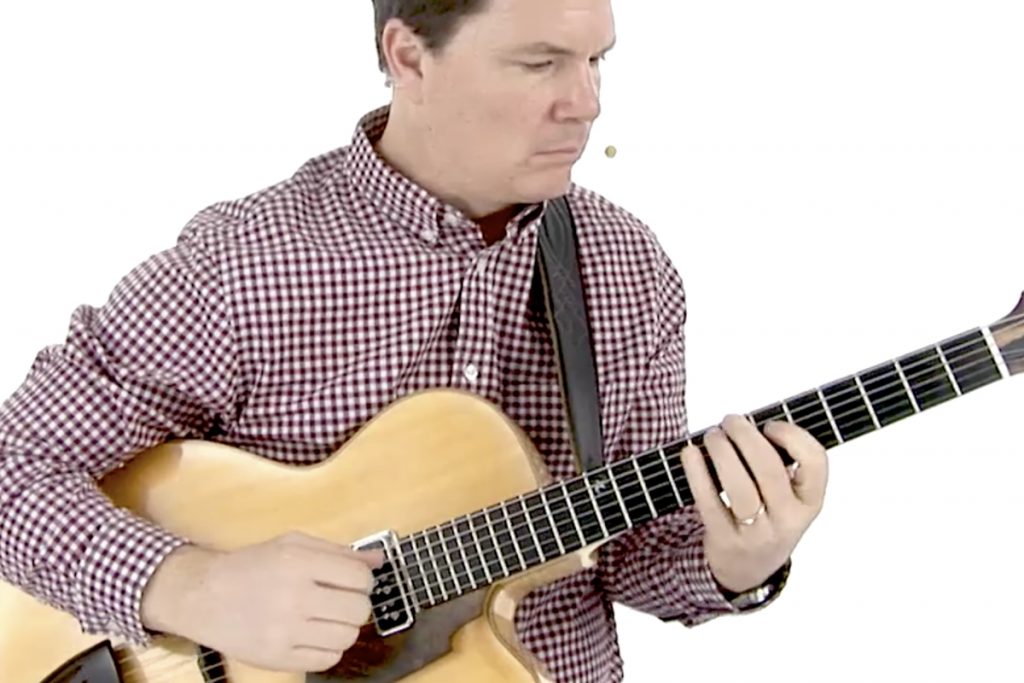Learning walking bass lines and the accompanying comping techniques gives jazz guitarists a way to play solo while still having a full, rich sound that a bassist offers. In these free guitar lessons, Sean McGowan walks you through performances studies that will show you how to build your own bass parts while comping on the top strings for a sophisticated jazz sound.
The two performance studies are taken from Sean’s second TrueFire course, Walking Bass & Comping for Jazz Guitar. The first étude, “Substitution Blues”, is a 12-bar blues introducing some interesting jazz chord voicings to play over the bass line. “Alll the Things We Are” is based on the Jerome Kern standard, “All the Things You Are”, utilizing pedal tones, altered chords, and voicings featuring stacked fourths. Let’s get started!
Substitution Blues: Overview
A 12-bar jazz blues in the key of F, this étude adds some color by incorporating new chord voicings and substitutions, including an alternate turnaround.
Substitution Blues: Performance
Download the tab and notation for this fingerstyle jazz guitar lesson on TrueFire.
Substitution Blues: Breakdown
When comping, jazz guitarists should know a variety of substitutions and turnarounds to add interest to a standard blues progression. This étude offers a number of different harmonic moves, along with triplet rhythm figures in the bassline.
All the Things We Are: Overview
Jerome Kern’s standard, “All the Things You Are”, is one of the most famous and often played songs on gigs and jam sessions. This study will help you develop quick chord hits on top of a loose walking bassline, while providing an excellent technical workout for the fretting hand, changing fingerings and positions regularly.
All the Things We Are: Performance
Download the tab and notation for this fingerstyle jazz guitar lesson on TrueFire.
All the Things We Are: Breakdown
Another chord progression built on cycle four and ii-V-I moves, this incorporates standard guide tone voicings as well as pedal tones, altered chords, and voicings featuring stacked fourths.
If you’re looking for more ways to play fingerstyle jazz guitar while incorporating your own basslines, there are 8 more études in the full course on TrueFire. There you’ll find each guitar lesson tabbed and notated for your learning pleasure, with Soundslice and Guitar Pro included to help you develop this technique. Check it out now!
